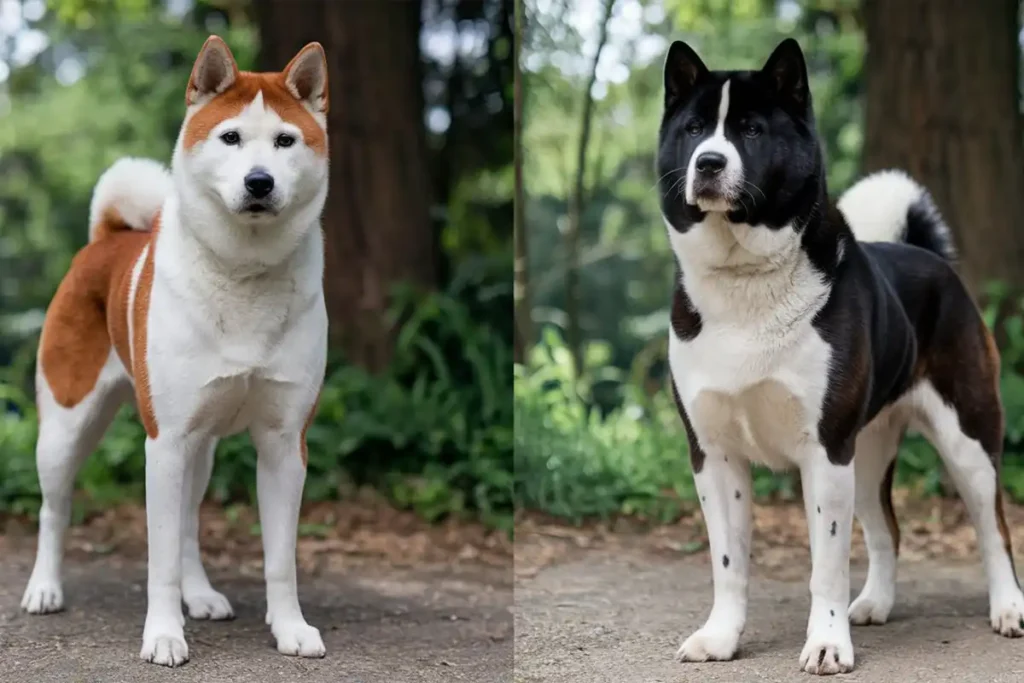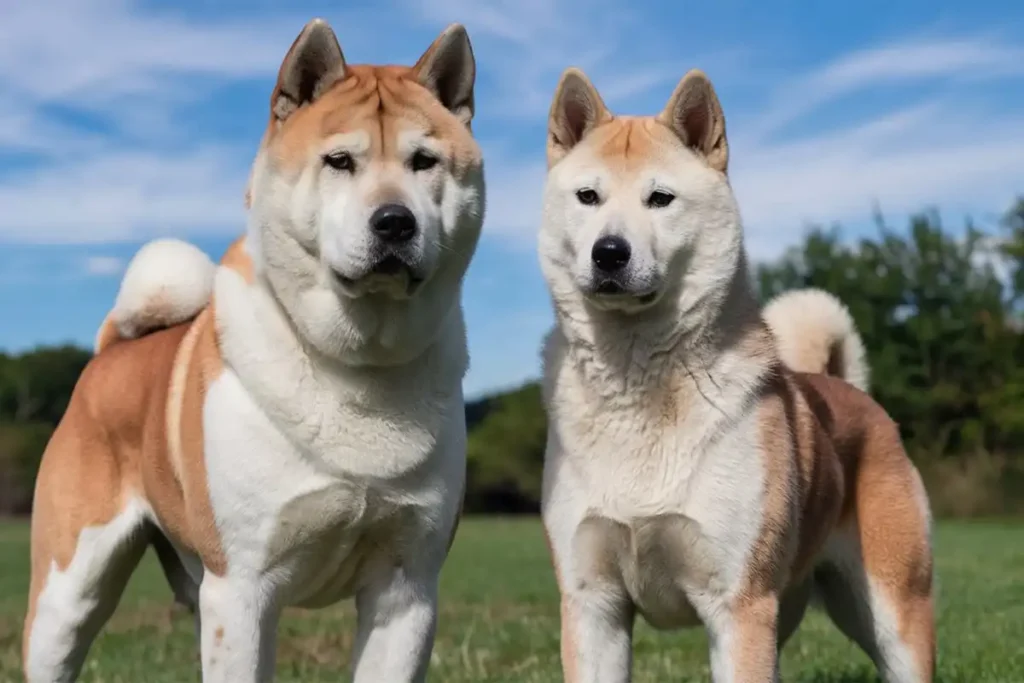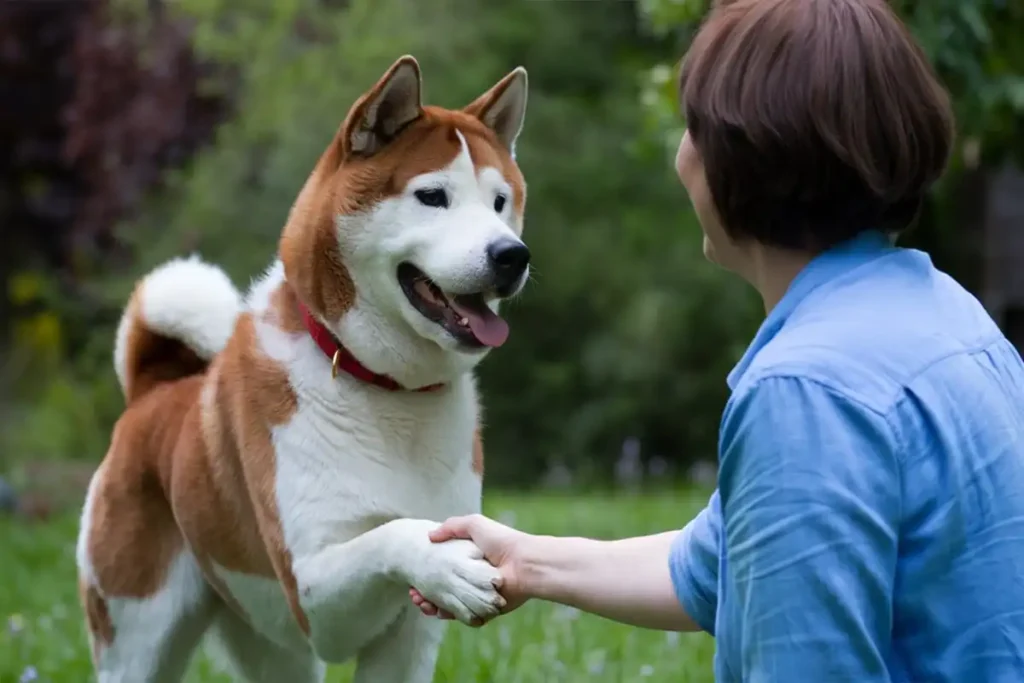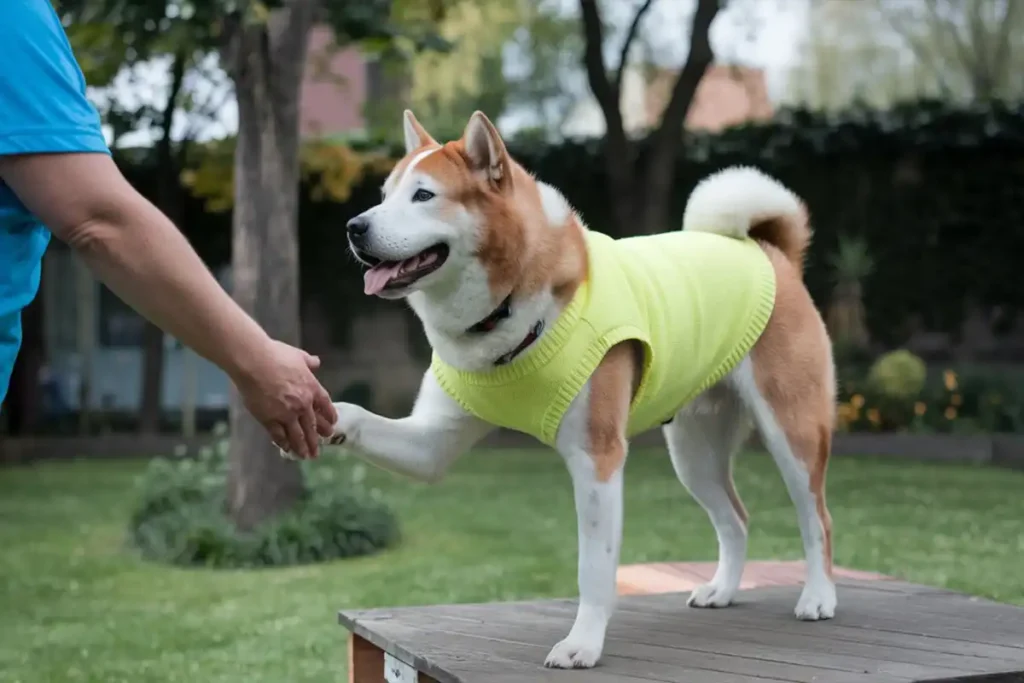Are Akitas dangerous dogs? It’s a question many potential dog owners ask when they first encounter this striking and powerful breed. With their bold appearance, confident stance, and quiet strength, Akitas often spark curiosity—and sometimes concern—about their temperament. But there’s much more to these noble dogs than meets the eye.
Akitas, originally from Japan, carry a deep history of loyalty, bravery, and companionship. Known for their strong protective instincts and dignified nature, they have been revered for centuries as devoted guardians and family companions. However, their complex temperament and independent mindset have led to misunderstandings and myths, particularly around their behavior and suitability as pets.
In this blog post, we’ll explore what truly defines the Akita dog—beyond the stereotypes. We’ll break down the facts about their temperament, bust the common myths, and discuss their behavior around kids, strangers, and other pets. If you’re considering bringing an Akita into your life or just want to learn more about this remarkable breed, read on to discover why Akitas are both special and, with the right care and training, safe and loving companions.
Understanding the Akita Dog Temperament
The History and Origins of the Akita Breed
The Akita breed traces its roots back to the snowy, mountainous regions of northern Japan. Originally bred for hunting large game like boar, deer, and even bears, these powerful dogs earned their reputation as fearless and determined hunters. Over time, their role evolved from working dogs to cherished protectors of the home and loyal family companions. The Akita Inu, the original Japanese variety, became a national symbol of courage and loyalty—so much so that statues of Akitas are often given to honor achievement or offer encouragement.
In the mid-20th century, American soldiers stationed in Japan brought Akitas back to the United States, where the breed further developed into what is now known as the American Akita. These two types—Japanese Akita Inu and American Akita—share the same noble roots but differ in appearance and temperament. Understanding this rich heritage helps answer a bigger question: Are Akitas dangerous dogs? Their history shows a breed shaped by both strength and unwavering devotion.
Natural Temperament Traits of Akitas
Akitas carry a unique blend of strength, independence, and calm dignity. They tend to form deep bonds with their families and often display fierce loyalty to their loved ones. Akitas are not overly vocal or hyperactive—instead, they move with quiet confidence and prefer to observe before reacting. They often display a cat-like aloofness, staying reserved around strangers but showing great affection and gentleness at home.
Because of their independent thinking, Akitas don’t always seek approval like more people-pleasing breeds do. This can make them seem stubborn, but in reality, they simply like to assess situations on their own. Their temperament reflects their original roles as hunters and protectors—traits that continue to shine today. When someone wonders, Are Akitas dangerous dogs? it’s important to recognize that their boldness isn’t aggression—it’s instinct combined with intelligence.
Are Akitas Aggressive by Nature?
Many people ask, Are Akitas dangerous dogs? because of stories or stereotypes linking them to aggression. But aggression isn’t built into an Akita’s DNA—it’s shaped by environment, training, and socialization. Akitas can become reactive or territorial if they’re not properly trained or if they lack exposure to people and animals during their early development. This isn’t unique to Akitas; it applies to any strong-willed breed.
What sets Akitas apart is their intense loyalty and strong protective instinct. They might not warm up quickly to strangers, and they can react if they sense a threat to their family. However, a well-socialized and responsibly raised Akita can be calm, gentle, and even playful. The key lies in understanding their needs and setting clear boundaries through training. Aggression isn’t a default—it’s a learned behavior that responsible dog owners can prevent.
Comparing Japanese Akita vs American Akita Behavior
Though closely related, the Japanese Akita (Akita Inu) and American Akita have distinct behavioral differences. The Japanese Akita tends to be more reserved, sensitive, and cat-like in personality. They often show an elegant, composed demeanor and prefer a quiet, consistent environment. These dogs value personal space and can be aloof even with familiar people, yet they remain incredibly loyal and calm.
In contrast, the American Akita generally shows more boldness and assertiveness. They often appear more outgoing and confident around new people and unfamiliar situations. American Akitas are typically larger and more powerful, with a strong presence that reflects their history as protectors. Both types need firm, respectful leadership and positive training from a young age.
When considering Are Akitas dangerous dogs?, it’s important to understand which type you’re dealing with, as temperament and behavioral tendencies vary. Matching the right Akita to your lifestyle plays a big role in creating a successful bond.
Myths vs Facts: Debunking Akita Dog Myths
Common Misconceptions About Akita Aggression
Many people assume Akitas are naturally aggressive, but that belief comes from misunderstanding the breed’s behavior rather than reality. Akitas don’t bark excessively or show outward excitement like some other breeds. Instead, they observe quietly and act only when necessary. This reserved nature can be mistaken for coldness or even hostility by those unfamiliar with the breed.
Another common myth is that Akitas can’t live with other dogs or children. While they may not tolerate pushy or dominant behavior from other animals, many Akitas do well with proper introductions and early socialization. Their calm, stable nature makes them excellent companions for respectful children and pets—when raised the right way. So when someone asks, Are Akitas dangerous dogs?, it’s crucial to separate fact from fiction and understand that aggression is not a default trait but a potential result of poor handling.
The Role of Media in Shaping Breed Reputation
Movies, news reports, and viral videos often influence how people view certain dog breeds—and unfortunately, Akitas haven’t always received fair treatment in the media spotlight. When incidents occur involving large, powerful breeds, headlines tend to focus on the breed more than the circumstances. This has contributed to the public’s fear-based perception of Akitas, often labeling them as unpredictable or dangerous.
Media portrayals rarely show the countless loyal, well-trained Akitas living peacefully in homes around the world. These dogs have also played heroic roles throughout history, most famously with Hachiko, the Akita who waited at a train station for his deceased owner every day for years. Stories like these deserve equal attention. Before deciding Are Akitas dangerous dogs?, people should look beyond the headlines and learn about the breed from real-life experiences and balanced perspectives.
Akita Breed Facts You Should Know
Understanding the Akita means digging into the facts—starting with their origins as hunting and guard dogs in Japan. Akitas possess strength, intelligence, and unwavering loyalty. They are naturally clean, often house-training themselves quickly, and they rarely bark unless they feel it’s absolutely necessary.
They thrive in calm, structured environments and need firm, respectful leadership—not harsh treatment. Despite their serious appearance, Akitas can be affectionate, silly, and deeply loving with their families. These dogs also excel in tasks that require independence and problem-solving, which reflects their intelligent and somewhat stubborn nature.
Knowing these facts helps shift the question from Are Akitas dangerous dogs? to Are you prepared for the responsibility that comes with owning such a unique and noble breed?

Real Stories from Responsible Akita Owners
Nothing speaks louder than real-life experiences. Many Akita owners describe their dogs as gentle giants, deeply bonded to their families and surprisingly patient with children. One owner shared how her Akita acted like a shadow—always nearby but never in the way—protective but never reactive, especially when introduced properly to guests and other pets.
Another Akita owner explained how early training and socialization shaped a calm, confident dog that now serves as a therapy animal in hospitals. These stories prove that with time, effort, and the right environment, Akitas can thrive as loyal family members. The truth becomes clear when you listen to the people who live with them every day: Are Akitas dangerous dogs? Not when they’re loved, trained, and understood.
Akita Behavior and Protection Instincts
Understanding Akita Guard Dog Instincts
Akitas naturally carry strong guard dog instincts. They don’t need training to be protective—it’s in their DNA. Originally bred to guard royalty and hunt large prey, Akitas developed a deep sense of responsibility and vigilance. They often watch over their home with quiet intensity, always aware of who enters and exits, even if they don’t react outwardly.
Unlike many breeds that bark at every sound, Akitas usually only alert their owners when something truly feels off. This measured, thoughtful response makes them excellent watchdogs. However, their protective nature can become a challenge if owners fail to provide structure, leadership, and early social exposure. If someone asks, Are Akitas dangerous dogs?, the real answer depends on how those natural instincts are shaped through training and environment.
Akita Behavior in New Environments
When entering new environments, Akitas often take a cautious, observant approach. They tend to scan the situation before deciding how to interact, which can sometimes make them seem standoffish or shy. This behavior doesn’t mean they’re fearful—it shows their intelligence and confidence in unfamiliar settings. Akitas don’t react impulsively. They evaluate.

Owners may notice their Akita sticking close to them in public places or taking time to warm up to new people or pets. This cautious behavior is typical and even admirable for those seeking a thoughtful, low-reactivity dog. Still, socialization from a young age is essential to ensure they respond calmly in a wide range of environments. When someone wonders, Are Akitas dangerous dogs?, it’s important to realize that what looks like distance is often a sign of composure, not aggression.
How Akitas React to Strangers and Other Animals
Akitas usually don’t throw themselves into social situations, especially with strangers or unfamiliar animals. They prefer to size people up before engaging, and they tend to remain neutral or aloof until they feel comfortable. Some Akitas choose to ignore strangers entirely, while others may stand close to their owner, watching the interaction before deciding how to respond.
When it comes to other animals, Akitas may not tolerate dominance or unpredictability—especially from other strong-willed dogs. They generally do best in homes where the owner understands canine body language and can facilitate calm introductions. That said, many Akitas live peacefully with other dogs and even cats when properly raised together.
If someone asks, Are Akitas dangerous dogs?, they should understand that reactions to strangers and pets depend heavily on the dog’s upbringing, training, and the confidence of its handler.
Are Akitas Good Family Dogs with Protective Traits?
Akitas form deep bonds with their families and often act like silent sentinels, keeping a watchful eye over everyone they love. They often become especially close to one or two family members but still remain loyal and respectful to the entire household. When raised with children and exposed to family life early, Akitas usually adapt well and take on a gentle, guardian-like role.
These dogs don’t typically enjoy chaos, so they may become overwhelmed in loud, unstructured households. However, in calm homes with strong leadership and clear boundaries, they can become some of the most devoted and protective companions you’ll ever meet.
So, Are Akitas dangerous dogs? Not in the right hands. With trust, respect, and early socialization, Akitas become loyal protectors—not just of your home, but of your heart.
Akitas and Families: Safety, Socialization & Kids
Are Akitas Good with Kids? What to Expect
Akitas can be wonderful with children—when raised in the right environment. They tend to be calm, gentle, and deeply protective once they bond with the family. Many Akitas instinctively treat younger family members with care, often positioning themselves near kids during playtime or naptime like natural guardians.
However, Akitas don’t enjoy rough or chaotic behavior. Unlike more tolerant breeds, they may not respond well to pulling, climbing, or sudden noise. Children must learn how to respect the dog’s space and signals, and adults need to supervise interactions, especially with young kids.
So, are Akitas dangerous dogs when it comes to kids? Not if both the dog and the children are properly introduced and guided. In fact, Akitas can become incredibly loyal family protectors and gentle companions to well-mannered kids.
The Importance of Early Socialization
Socialization plays a massive role in shaping an Akita’s temperament. Without it, even the calmest Akita may become suspicious, reactive, or overly protective. From the moment you bring your Akita puppy home, you should begin exposing them to a variety of people, sounds, environments, and experiences in a positive, controlled way.

Start with short walks in quiet neighborhoods, visits to pet-friendly stores, and slow introductions to visitors at home. Make every new interaction a positive one—use treats, praise, and patience. This builds your Akita’s confidence and helps them learn that new experiences don’t equal threats.
Many people who ask, are Akitas dangerous dogs, overlook how much socialization impacts behavior. When done right, socialization transforms a naturally alert dog into a well-adjusted companion.
Tips for Introducing an Akita to Your Family
Bringing an Akita into your home means setting the stage for a smooth transition. Begin by creating a calm, secure space where your new dog can relax without pressure. Allow your Akita to explore their surroundings at their own pace and meet family members one at a time, starting with the most calm and confident person.
Maintain structure during the first few weeks. Use routines, clear boundaries, and consistent training to help the Akita understand their role in the family. Introduce kids and pets gradually, always supervising and rewarding calm, positive behavior. The goal is to build trust—not rush bonding.
When people ask, are Akitas dangerous dogs, they often overlook how crucial that initial introduction period is. With patience and structure, you can set your Akita up for a lifetime of love and loyalty.
Safety Tips for Households with Akitas
Living safely with an Akita means setting clear expectations—for both the dog and the humans. First, teach children how to interact respectfully. No grabbing, poking, or trying to “ride” the dog. Help them understand when an Akita needs space or rest.
Next, avoid triggering territorial behavior. Don’t allow strangers to approach your Akita too suddenly or reach over gates or fences. Give your dog a designated safe space to retreat to, like a crate or quiet room. And always supervise introductions with guests, especially if your Akita hasn’t met them before.
Also, keep training consistent and boundaries firm. Akitas thrive in households where they know their role and feel secure. So, are Akitas dangerous dogs in family homes? Only if their needs are ignored. With proactive safety and mutual respect, Akitas become some of the most stable and protective family members you could ask for.
Training and Responsible Ownership
Akita Training Tips from Dog Behaviorists
Dog behaviorists consistently stress one key point: Akitas need calm, confident leadership. These dogs are intelligent and independent thinkers, which makes training both rewarding and challenging. You won’t get far with yelling or harsh corrections. Instead, use positive reinforcement—rewards, praise, and consistency—to shape the behavior you want.
Start with basic obedience training early. Teach your Akita simple commands like sit, stay, and leave it, and practice them daily. Behaviorists also recommend mental stimulation, such as puzzle toys or scent games, to keep an Akita’s sharp mind engaged. Socialization exercises should continue throughout adulthood—not just during puppyhood.
Some people still ask, are Akitas dangerous dogs, without realizing how much structure and training improve their behavior. When they have good support, Akitas can be loving and obedient friends.

Why Consistent Dog Training Matters
Training a dog isn’t something you do for a few months and forget. With Akitas, consistent training shapes not just obedience, but overall behavior and emotional stability. These dogs thrive when they know exactly what’s expected of them. If the rules change day to day, they can become confused, frustrated, or defiant.
Consistency also strengthens the bond between you and your Akita. It builds trust, helps prevent dominance struggles, and allows you to control high-stress situations with simple commands. When everyone in the household follows the same training approach, the dog responds with confidence and security.
When people wonder, are Akitas dangerous dogs, they often overlook how much confusion or mixed signals contribute to bad behavior. A well-trained Akita, raised with structure and purpose, is anything but dangerous.
How to Manage and Redirect Aggressive Behavior
Even the best dogs can show signs of aggression if they feel threatened, anxious, or overstimulated. With Akitas, early signs include body stiffening, intense staring, or a low growl. It’s important to spot these behaviors early and respond calmly—but firmly. Don’t punish the dog for growling. Look at what is happening and try to take away the thing that is causing the problem, if you can.
Redirect the behavior using simple, practiced commands like “leave it” or “come.” If your Akita responds, reward immediately with praise or treats. This reinforces calm choices. If the situation escalates, create distance and let the dog reset before trying again. Avoid high-stress environments until your Akita is ready.
So, are Akitas dangerous dogs if they show aggression? Not necessarily. Like any breed, they need owners who recognize the signs and know how to respond. Managing aggression takes understanding, not fear.
What Potential Owners Should Know Before Getting an Akita
Owning an Akita isn’t for everyone. These dogs demand time, patience, and a strong sense of leadership. They won’t blindly follow commands—they’ll question your decisions and test boundaries. If you’re looking for an easygoing, social butterfly of a dog, the Akita may not be the right match.
But if you’re consistent, confident, and committed to training, Akitas offer an unmatched level of loyalty and companionship. They protect without being reactive, love without being clingy, and carry themselves with quiet dignity. You’ll need to invest in early socialization, regular training, and firm but gentle guidance.
When someone asks, are Akitas dangerous dogs, the better question is—are you ready for the responsibility of owning such a powerful and emotionally complex breed? If the answer is yes, then you’re in for a truly special bond.
Conclusion
So, are Akitas dangerous dogs? The honest answer depends on the owner’s knowledge, commitment, and willingness to respect this powerful breed’s nature. Akitas are not naturally aggressive—they are intelligent, reserved, and deeply loyal dogs with a strong protective instinct. These traits can look intimidating, especially to people unfamiliar with their temperament. But when guided with patience, socialization, and consistent training, Akitas thrive as calm, stable companions.
Like any large, strong-willed dog, Akitas require responsible ownership. People who expect a docile, easygoing pet may feel overwhelmed by the Akita’s independence and strength. However, those who meet the breed’s needs discover a truly noble companion—one that protects, observes, and loves with quiet devotion.
It’s time to move past the stereotypes and ask better questions than just are Akitas dangerous dogs. Instead, ask: Are you ready to invest in training? Will you commit to proper socialization from day one? Can you provide structure, love, and leadership? If you can answer yes, then the Akita can become one of the most loyal and trustworthy dogs you’ll ever know.
Don’t let fear or misinformation keep you from appreciating this beautiful and misunderstood breed. Akitas deserve to be known not for outdated myths, but for their loyalty, strength, and unique spirit. With the right care and understanding, an Akita is not a danger—they’re a lifelong protector and friend.
Read More About Akita Dogs in this Article.
Discover the American Akita Dog Breed in This Article
Discover More About Dogs and Breeds From This Section!
Look for The Best Stuff For your Pet on PetMD Official.
